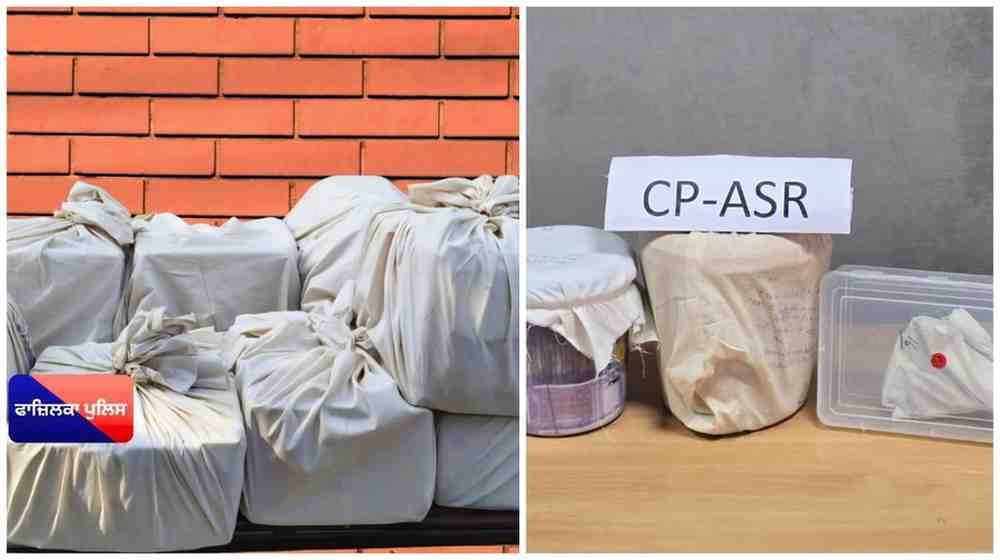Key Points:
Decades of Drug Menace: Punjab has been grappling with a drug crisis for several decades, dating back to the 1980s.
Major Crackdown: In a major crackdown by the Punjab Police several people have been apprehended many of whom have links with smugglers in Pakistan
Young- Age Victims: The age group most affected by the drug menace in the state belongs to individuals between 18 and 30 years.
Wide spectrum Of Causes: The factors driving people towards drugs vary from militancy, poverty, and unemployment to the allure of a “cool” lifestyle.
Remedial actions: CM Bhagwant Mann established a State Steering Committee to oversee and coordinate the de-addiction and rehabilitation program.
Punjab, as its name suggests, is the land of five rivers, but nowadays the region is being washed away by another river – that of drugs. It is one of the hotspots of drug menace in the country contributing a significant part in drug smuggling, drug addiction, and deaths due to drugs.
The state known for its rich cultural heritage and distinctive geological characteristics shares its border with Pakistan, one of India’s most contentious neighbors. Pakistan, given its role in spreading menace in India, can also be considered one of the major causes of the drug menace in Punjab.
However, despite the efforts of India’s biggest adversary, Punjab police forces have shown their stern position in fighting the drug nuisance in the state. The vigilant forces are standing resolutely against narco-terrorism to eliminate it from the state.
In the pursuits of combatting the drug crisis Punjab police through the month of January has been successful in apprehending 26 drug peddlers. Most of these suppliers have been in contact with their counterparts in Pakistan. Apart from the apprehensions Punjab Police had seized 5kg of Charas, 12 kg of Heroin, and various other arms and ammunition.
According to data, 75 percent of all drugs seized in India in 2020 were in Punjab. Coming to drug deaths, in 2022, Punjab’s share was 21 percent. Most of those were people aged 18-30.
Some of the reasons stated for the growing dependency on drugs in Punjab are militancy, poverty, a lack of job opportunities, agrarian crisis, and easy availability of narcotic substances. The widespread culture of heavy drinking and partying in Punjab has further fueled the problem.
The pop culture of bhangra music has long portrayed drugs as a “cool” lifestyle choice, influencing many young people to experiment with them. Alongside this, factors such as peer pressure, depression, and loneliness also play a significant role in driving the youth toward drug use.
In July 2018, the state sought ‘special category’ status under the National Health Protection Scheme, highlighting itself as the ‘biggest victim of Pakistan-sponsored narcotics terrorism.’ Being a border state, Punjab serves not only as a transit point but also as a major market for drugs.
The drug epidemic is not a new phenomenon in Punjab and has been creating obstacles in the state for decades. In the early 1980s, as armed militancy took root in the state, it became flooded with narcotics from across Pakistan, just ahead of the cataclysmic events surrounding the Indian Army’s 1984 Golden Temple operation.
To combat the drug plague in the state, several steps have been taken by the government; however, their effectiveness presents a daunting picture. One of the recent measures was an unprecedented move by Punjab Chief Minister Bhagwant Mann, who ordered the transfer of at least 10,000 police personnel to crack down on the drug menace. Mann claimed that the reason behind this was the nexus between police officials and drug peddlers.
CM Mann has also established a State Steering Committee, led by Chief Secretary KAP Sinha and with Principal Secretary Rahul Tiwari as its nodal officer, to oversee and coordinate the de-addiction and rehabilitation program. The school and higher education departments will involve master trainers whose role will be to instill a sense of fear among students about the harmful effects of narcotics.
The state operates 303 drug de-addiction and rehabilitation centers, including private ones, along with 529 outpatient opioid-assisted treatment (OOAT) clinics and mobile OOAT units. The highest number of patients seeking treatment are from Gurdaspur, Tarn Taran, and Bathinda.








